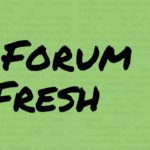12.04.2017 CalFresh helps millions of California workers in low-paying jobs buy the food they need directly from businesses in their communities. This photo essay by photojournalist Rucha Chitnis, highlights the importance of CalFresh for California’s workers, farmers, retailers and the local economy.
[metaslider id=7948]
Photo essay: Check out the slider above.
The future of CalFresh might be in peril. And anti-hunger groups across California are galvanizing into action. Formerly known as the food stamps program, CalFresh affords millions of struggling Californians to put food on the table.
California abounds in contradictions and inequities; while the Golden State has the sixth largest economy in the world, it also has the highest poverty rate in the nation when taking into account the standard of living. Nearly one in five Californian lives in poverty. Anti-hunger groups underscore that federal nutrition programs, such as CalFresh, are critical to many. And now, an increasing chorus of anti-poverty groups, food retailers and farmers’ market operators is also calling attention to the inconspicuous ripple effects of CalFresh in boosting local economy, from benefiting our friendly neighborhood corner stores to small family farms in the Central Valley.
“CalFresh is a lifeline to address hunger and strengthens the agricultural economy,” said Tracey Patterson, Director of Legislation at California Food Policy Advocates. “It’s tragic though that the very people who grow our fruits and vegetables are also struggling to meet their nutritional needs. As low wage workers, they have a right to eat as well, and we have to ensure that CalFresh meets the needs of farmworkers and rural communities.”

Ana Zamudio, a fruit grower from Escalon, concurs with Patterson. “We see people use EBT cards often at the Stockton farmers’ market,” she said. EBT card refers to the Electronic Benefits Transfer card that CalFresh recipients use to buy food. Zamudio and her father manage a small family farm and sell their fresh fruits at the Sunday farmers’ market in Stockton. “We have been through hard times ourselves, and think it’s important for low-income families to eat fresh fruits and vegetables,” she said.
Recently the California Hunger Action Coalition, a network of statewide anti-hunger groups strongly urged the House Agriculture Committee to reject any proposals that would reduce benefits of CalFresh in the Farm Bill next year. “Our coalition strongly encourages the committee to look for smart ways to invest more in SNAP, our nation’s most efficient and effective anti-hunger program,” they wrote in a statement to the committee. SNAP is the name of a federal nutrition assistance program that is known as CalFresh in California.
“The SNAP program has always reflected our bipartisan national commitment to ensuring that no one in America goes hungry just because they have fallen on hard times. Changing the funding structure would force states to cut vulnerable people off food assistance and reduce its responsiveness to economic downturns and natural disasters,” said Jared Call, a nutrition policy advocate at CFPA.
OPPORTUNITIES FOR ACTION
Congress will soon begin discussions to renew the Farm Bill, which will expire in September 2018. The Farm Bill is the nation’s most important piece of food and farming legislation and includes the country’s largest anti-hunger investments. Join the California Food Policy Advocates for a Twitter Chat on Friday, December 8th at 11am PST to discuss how the Farm Bill can help grow the economy while supporting California’s low-wage workers.
Sign up for future calls to action by subscribing to CFPA’s Nutrition Action Alerts. link
SHARE:




